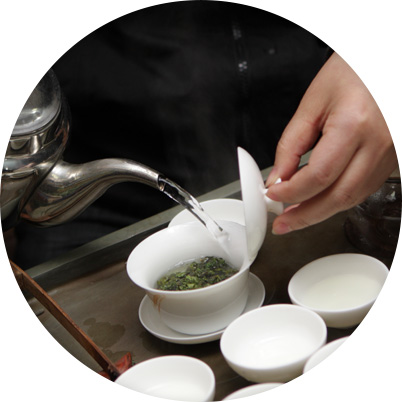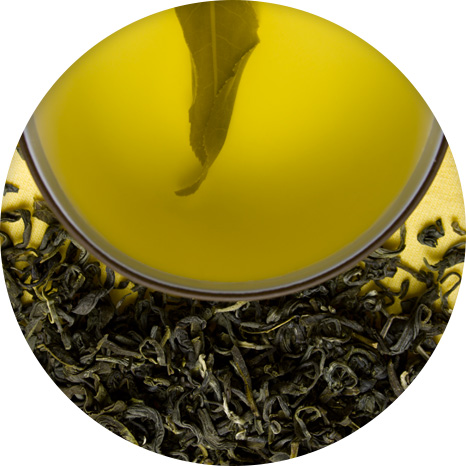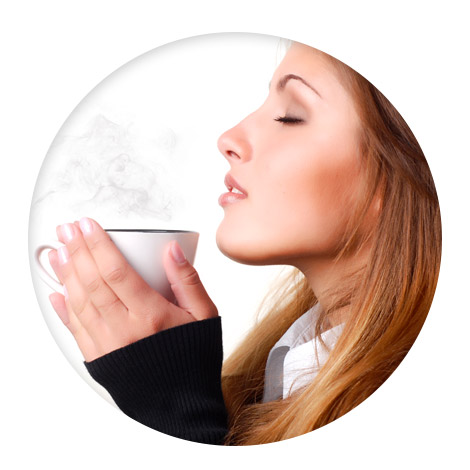Tea Tasting Guide
Tea Tasting Guide
TASTING TEA
We offer tutored tea tastings in your place of business or home and cater to your specific needs. Feel free to contact us to discuss the possibilities during a personal consultation.
Tea tasting is fun and is not supposed to be a daunting task. If you like tea then there is not much more you need in order to taste tea. It’s really quite simple. Like anything else, as you have more experience tasting you will become more in tune with your own likes and dislikes. Since taste and smell are such a personal experience, there is no right or wrong, but experience will encourage you to grow the vocabulary you need to accurately describe your personal response to different flavours and aromas.
Tasting tea is comprised of: APPEARANCE, AROMA and TASTE
APPEARANCE
As you observe more tea you will realize how varied dry tea leaves are from one another in appearance as much in taste. It is important to pay attention to the tealeaves while they are still dry, as they reveal the quality of the tea grade. For example, sometimes tea has a dull flat appearance rather than a nice finish. This could mean the tea is stale or hasn’t been processed properly. When observing, consider the leaves' shape, size, colour, and finish. Are the leaves rolled in a ball? Are they long and slender? Are they matte or shiny? Once you have steeped the tea leaves, they can change completely. Observe how have they changed.
Now consider the look of the liquor once brewed. Look at the colour and notice how bright or dull it is. Is it a brilliant red or a pale yellow green? Perhaps it is a deep brown. Tea brews steeped from the same tea type, but from different origins might be very similar in colour, but can have slight variances in their shade or intensity. Try to get in the habit of paying attention to these little particularities and you will build a useful knowledge base for future tea tasting.
AROMA
Smell and taste are tightly connected. The reason for this is because when we have something in our mouth, both our tongue and olfactory (nose) receptor cells are sending messages to our brain.
Our sense of smell often brings us back to a specific memory or vague recollection of a time we cannot put our finger on. While sometimes this is a pleasant experience, it can also bring on negative emotions that can be quite strong. Either way, our associations with specific scents affects our responses and interferes with attaining an objective perspective of the smell. When tasting tea we should acknowledge these first impressions, and be aware of our natural inclination to judge them. We should also try not to let this hinder us from exploring the scent any further if we dislike it. The world of taste has opened up immensely.
TASTE
Once we have taken in the look and smell of our tea it is time to taste it.
The four tastes that our taste buds sense are sweet, sour, salt and bitter of which salt is the least prominent when it comes to tea. The nuances of flavours vary greatly among the different tea types and also within each type. With experience we can begin to make assumptions about what a tea will taste like when we hear the tea’s type it is as well as its origin. For example, one of the most distinctive teas is called Lapsang Souchong. Its characteristic flavour is smokiness, because the tea leaves themselves have been smoke-dried over fire. While people generally have a love it or hate it attitude toward Lapsang Souchong, it is no question that we know what taste to expect when we hear the name Lapsang Souchong.
Selecting your favorite tea for every occasion will become natural as you get to know the different types as well as the varieties within each type. On a cold winter night when you are snuggling up to a book with a blanket you most likely aren’t looking for the same tea as you would on a hot summer day after finishing a run. Go beyond your comfort zone and test the waters. We’re sure you’ll fall in love at least once.
Tasting Tip #1:
To get the most flavourful taste it's best to slurp the tea loudly as you sip it. In doing so, you fill your mouth with tea so it can reach every taste bud equally.
Tasting Tip #2:
When tasting teas we like to sip in the following order to ensure our palates don’t get spoiled:
Tasting Tip #3:
In between smelling different scents we can smell our own skin to refresh our palate.





